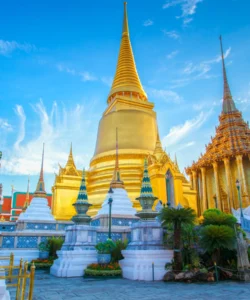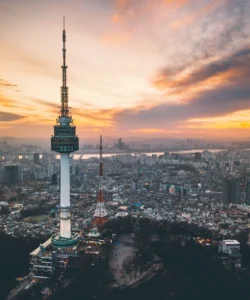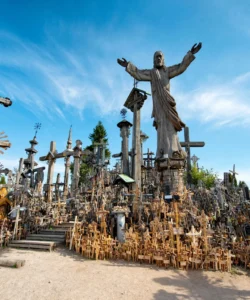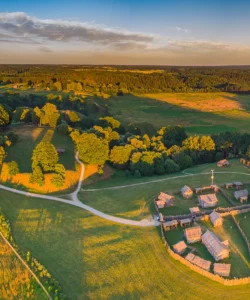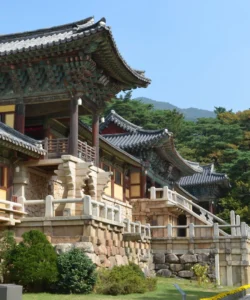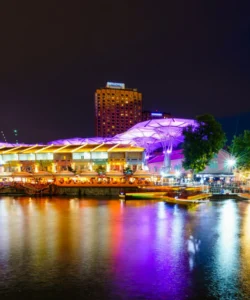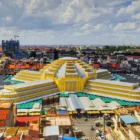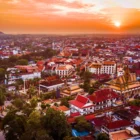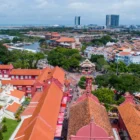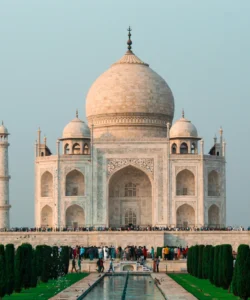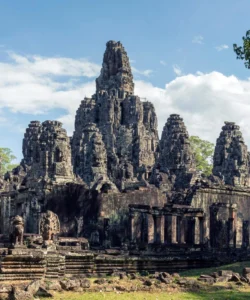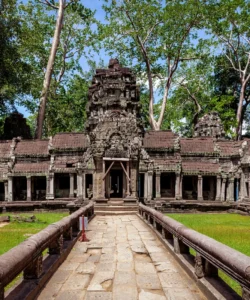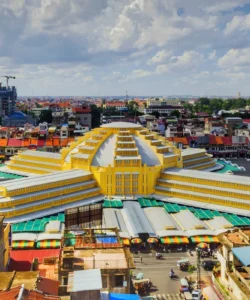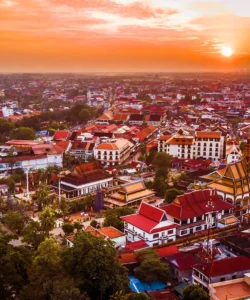Uluwatu Temple, known locally as Pura Luhur Uluwatu, is one of Bali’s most breathtaking and spiritually significant sea temples. Perched dramatically on the edge of a towering limestone cliff, approximately 70 meters (230 feet) above the crashing waves of the Indian Ocean, it offers awe-inspiring panoramic views, particularly at sunset, and is a sacred home to mischievous macaques.
Name: Uluwatu Temple (Balinese: Pura Luhur Uluwatu, meaning “Temple of the rock-forest on the end of the land”)
Address: Pecatu, South Kuta, Badung Regency, Bali, Indonesia.
It is located on the southwestern tip of the Bukit Peninsula (often called the “Bukit” or “Uluwatu” area) in southern Bali.
How to Get There:
Uluwatu Temple is a popular destination, especially for sunset:
- By Car/Scooter Rental with Driver (Recommended): This is the most convenient way to visit. You can hire a private car with a driver for a half-day or full-day tour. Scooter rental is popular for experienced riders, though traffic in the area can be heavy.
- Taxi/Ride-Hailing Apps (Grab/Gojek): These services are readily available in Bali and can take you directly to Uluwatu Temple. For a return trip, it’s advisable to arrange with your driver or be prepared for potentially higher fares from local taxis at the site, as ride-hailing app drivers may be hesitant to pick up directly from the temple due to local taxi cartels.
- Guided Tours: Many tour operators in Bali offer half-day tours that include Uluwatu Temple, often combined with a seafood dinner at Jimbaran Bay.
- From Ngurah Rai International Airport (DPS): It’s about a 45-minute to 1-hour drive, depending on traffic.
- From Kuta/Seminyak/Nusa Dua: Approximately 30-45 minutes drive.
- Important Notes: Traffic can be very heavy in the late afternoon leading up to sunset. Parking is available near the entrance.
- Dress Code & Sarong: As a sacred site, visitors are required to wear appropriate attire. Sarongs and sashes are provided at the entrance for rent or often included with your ticket.
- Entrance Fee: There is a mandatory entrance fee for tourists.
Landscape and Architecture:
Uluwatu Temple’s architecture is deeply intertwined with its dramatic natural setting, creating a powerful spiritual and visual experience.
- Cliff-Edge Perch: The most striking feature is its unparalleled location on the very edge of a sheer limestone cliff, plunging directly into the Indian Ocean. This dramatic cliff face provides natural protection and a truly spectacular backdrop. The temple itself sits on a rock formation that extends from the cliff.
- Balinese Hindu Temple Complex: The temple is built in the traditional Balinese Hindu style, featuring several courtyards, gates, and shrines. While the main inner sanctuary (jeroan) is generally reserved for Hindu worshippers, visitors can explore the outer courtyards and pathways around the cliff edge.
- Meru Roofs and Intricate Carvings: The shrines feature the distinctive multi-tiered Meru roofs (thatched black palm fibre roofs), iconic to Balinese temple architecture. Stone carvings of Hindu deities, mythical creatures, and floral motifs adorn the temple gates and walls.
- Split Gate (Candi Bentar): A common feature in Balinese temples, the split gate (candi bentar) at the main entrance separates the outer and middle courtyards.
- Pura Uluwatu: The main temple building itself is located at the pinnacle of the cliff, accessible only by a long, winding pathway that skirts the cliff edge.
- Sacred Forest and Monkeys: The temple is surrounded by a small but dense monkey forest, inhabited by a population of long-tailed macaques. These monkeys are notorious for being very bold and cunning, often snatching sunglasses, hats, and other loose items from unsuspecting visitors. They are believed to be guardians of the temple.
- Amphitheater for Kecak Dance: A purpose-built amphitheater with stepped seating is located on the cliffside near the temple entrance. This open-air venue is designed to provide panoramic ocean views, serving as the dramatic backdrop for the famous Kecak Fire Dance performance at sunset.
What Makes It Famous:
- Spectacular Sunset Views: Uluwatu Temple is globally renowned for its breathtaking sunset views. As the sun dips below the horizon, it bathes the temple and the ocean in a kaleidoscope of colors, creating a truly unforgettable and highly photographed scene. It’s considered one of Bali’s premier sunset spots.
- Dramatic Cliff-Top Location: Its precarious and awe-inspiring position, perched high on a sheer cliff overlooking the vast Indian Ocean, is a defining feature and sets it apart from other temples.
- Kecak Fire Dance: The iconic Kecak Fire Dance performance held daily at sunset in the cliffside amphitheater is a major draw. This traditional Balinese dance, based on the Ramayana epic, features a chorus of male performers making vocal sounds (“cak-cak-cak”) instead of musical instruments, culminating in a dramatic fire dance.
- Mischievous Monkeys: The temple’s resident population of long-tailed macaques is famous for their intelligence and their cheeky habit of snatching items from tourists. This adds an element of excitement (and caution!) to the visit.
- Spiritual Significance: Uluwatu is one of Bali’s Sad Kahyangan Jagat (Six Key Temples of Bali), believed to be Bali’s spiritual pillars. It is dedicated to Sang Hyang Widhi Wasa in his manifestation as Rudra and is revered for protecting the island from evil spirits from the sea.
- World-Class Surfing Nearby: The cliffs below Uluwatu Temple are famous among surfers for their legendary waves, making the area a global surfing hotspot.
Differences from Some Other Wonders:
- Cliff-Edge Sea Temple: While Tanah Lot is a “land in the sea” temple, Uluwatu is unique for its dramatic perch directly on a towering, sheer limestone cliff face. This elevation and the feeling of being at the “edge of the world” looking down on the ocean are its defining physical attributes.
- Kecak Fire Dance as Integrated Experience: Unlike other temples that might host traditional performances, the daily, large-scale Kecak Fire Dance with the ocean sunset as its backdrop is a highly integrated and central part of the Uluwatu experience, making it a unique cultural offering tied directly to the site.
- Interactive (and Cautionary) Monkey Presence: While the Sacred Monkey Forest in Ubud is famous for its monkeys, the macaques at Uluwatu are particularly known for their bold thieving behavior due to their intelligence and constant interaction with tourists. Visitors are often warned and advised on how to deal with them, adding a specific element of “wildlife management” to the human experience.
- Focus on Sunset and Performance: While beautiful all day, Uluwatu is almost universally visited for its sunset spectacle and the Kecak dance, making its peak visitation time and primary appeal different from temples that are explored more broadly throughout the day.
- Surfing Connection: Its proximity to world-class surf breaks beneath the cliffs gives it an added dimension as a destination for the international surfing community, a unique blend of spiritual site and action sports hub.
- Limited Inner Temple Access: Similar to Tanah Lot, the inner sanctum of Uluwatu Temple is generally restricted to Hindu worshippers, with tourists primarily exploring the outer courtyards and cliffside paths. This contrasts with sites like Borobudur or Prambanan where visitors can climb through the temple structure.
Uluwatu Temple Photos:



